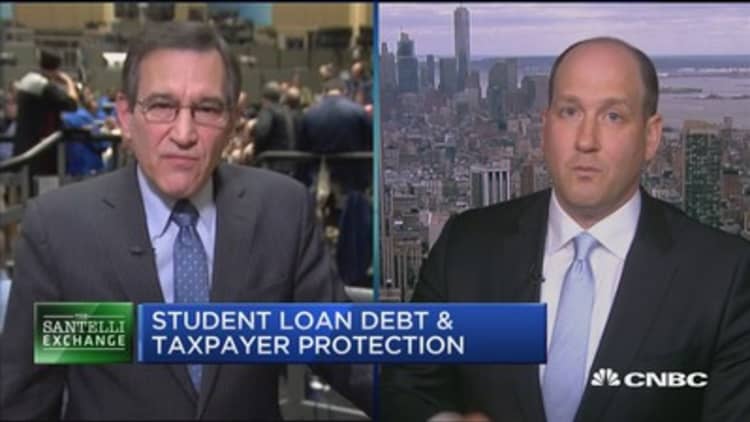
On average, more than 3,000 borrowers default on their federal student loans every day.
The number of people who have defaulted on their federal student loans increased 17 percent from 2015 to 2016, according to a Consumer Federation of America analysis of U.S. Department of Education data.
"Despite a booming stock market and unemployment falling, student loan borrowers are struggling," said Rohit Chopra, a senior fellow at the Consumer Federation of America and a former student loan ombudsman at the Consumer Financial Protection Bureau.
Last year, 42.4 million Americans owed $1.3 trillion in federal student loans. More than 4.2 million borrowers were in default as of the end of 2016, up from 3.6 million in 2015. In all, 1.1 million more borrowers went into or re-entered default last year.
People who have defaulted on their student loans "are going to have a tougher time passing an employment verification check, saving for retirement or ever buying a home," Chopra said. Borrowers in default can also have their wages garnished and their tax funds seized.
The increasing student loan default rate may have more to do with whether students finish their degrees than the rising cost of higher education.
"We don't have a student loan problem, we have a college completion problem," said Mark Kantrowitz, vice president of strategy for college and scholarship search site Cappex.com. "Students who drop out of college are four times more likely to default on their loans."
How to prevent student loan defaults
You can avoid defaulting by borrowing an appropriate amount for you or your children's college education. Kantrowitz recommends that students generally take out no more debt than their expected first year's salary out of college.
People with unmanageable student debt have several options:
If you have federal student loans, you can qualify for income-based repayment plans. The percentage of federal student loan borrowers enrolled in repayment plans has quadrupled over the past four years from 5 percent in 2012 to nearly 20 percent in 2016.
One drawback to income-based repayment plans is that you have to re-apply every year to qualify for lower payments. To make matters worse, the IRS data retrieval tool that helps borrowers apply for these repayment plans will be down for several weeks, the agency said.
Lawmakers from both parties have supported a bill that would require federal student loan borrowers in distress to be automatically enrolled in income-based repayment plans and to make it easier for people to stay enrolled in those plans, said Pauline Abernathy, executive vice president of the Institute for College Access & Success.
People with private student loans face limited options. Some private lenders offer forbearance if borrowers can't make their payments. Those benefits aren't as robust as those with federal loans and typically last no more than 12 months. And unlike most other debt, you usually can't get rid of student loans through bankruptcy.


